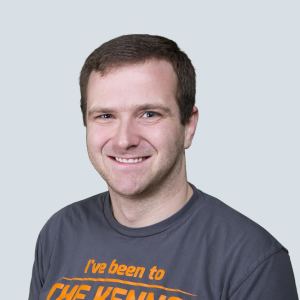Capital Efficient Entrepreneurship from Utah: Ben Dilts, Founder and CTO of Lucid Software (Part 1)
If you haven’t already, please study our Bootstrapping Course and Investor Introductions page.
Utah is becoming a wonderful hub for capital efficient technology entrepreneurship. People are not as delusional about artificial Unicorns, gratuitous fundraising, and high burn rates. They focus, instead, on fundamentals.
Sramana Mitra: Let’s start at the very beginning of your journey. Where are you from? Where were you born, raised, and in what kind of background?
Ben Dilts: I was actually born here in Salt Lake City, but my parents moved to Pennsylvania. I grew up just outside of Harrisburg, Pennsylvania since I was about two years old until I left for college. I came out to Utah again to go to school. I came out to Brigham Young University to study Computer Science. I fell in love with the mountains and have been here ever since.
Sramana Mitra: What did you study in college?
Ben Dilts: I was on the nine-year plan for getting my Bachelor’s in Computer Science from BYU. I did a year there studying Computer Science. I left for an ecclesiastical mission for a couple of years. I came back and studied for one more year. Then I took a summer job working at Zane Benefits and helping to start it early. I was the third person there.
This was a health benefits tech company. I was hired to build the technology. I built up the team and it turned into a more permanent position. I worked there for around four years. It was while I was there that I found a need for what became Lucid Chart. That eventually brought me back down to finish my degree and start the company that we have here now.
Sramana Mitra: Give me a bit of the chronology. What years are we talking?
Ben Dilts: I went up to Park City to start working at Zane in 2006. In 2008, there was some new healthcare legislation. We were working on building some products to administer health plans where there was no best practices for in place. We were starting from scratch reading the regulations and trying to figure out how to do this without breaking any laws.
As part of that planning process, we probably had half a dozen people working on this enormous flow chart. We had only two copies of Microsoft Visio because it was very expensive. It was mostly a matter of emailing around these 10-megabyte documents, printing them out, and drawing on them with markers. The process around the tools wound up sucking down a lot of our time than even designing this product. We were spending more time fighting the tools than actually designing the product. It made me crazy.
Back then, Google Docs were in pretty early form, but they were well-accepted in the business world. I thought, “Certainly, someone has done this for graphics and diagrams so we don’t have to deal with just emails.” I went looking. There were a couple of half-baked apps at that time but nothing at all that is ready for use in the workplace. Then in the summer of 2008, I just started working nights and weekends on something that would let me work together with my co-workers on building flow charts.
Sramana Mitra: So that’s the beginning of the story. You were still working inside of this other company at this point?
Ben Dilts: That’s right. This was a side project done on nights and weekends. When I say nights and weekends, it was around 30 plus hours a week of nights and weekends on top of my full-time job. It became an obsession for me. I worked through the summer and the fall. In December of 2008, I launched, what I would describe as, a mostly-working-most-of-the-time prototype of Lucid Chart.
A handful of bloggers picked it up, ran with it, and got reblogged. Then it hit LifeHacker pretty soon thereafter. Within the first 10 days after launch, I signed up a few thousand free users. I saw then that I had my hands on something good. I was not the only person who wanted or needed this. I became a lot more serious about it in the following years. In 2009, I continued to work on it on my own in order to bring the technology up to a state that I was happy with. I left my day job that summer and came back down to the main valley and finished up school. I also gathered together a team around the technology that I had started to build.
This segment is part 1 in the series : Capital Efficient Entrepreneurship from Utah: Ben Dilts, Founder and CTO of Lucid Software
1 2 3 4
Featured Videos
Can 1M/1M Help Me Raise Money?
How Does 1M/1M Democratize Entrepreneurship Education?
How Does 1M/1M Democratize Management Consulting?
When Is The Right Time To Join 1M/1M?
Can 1M/1M Help Me With Business Development?
Can 1M/1M Help Me With Market Sizing?
Can 1M/1M Help Me Validate My Product?
Will I Have Private 1-on-1 Sessions In 1M/1M?
How Does 1M/1M Help Entrepreneurs Connect With Silicon Valley?
Mentoring or Consulting?
Why Does 1M/1M Charge $1000 a Year?
Why Does 1M/1M Partner With Local Organizations?
Why Don\’t Mentoring Networks Work?
Why Is It Important To Study With 1M/1M Now?
Dan Stewart Story
Vikrant Mathur Story

